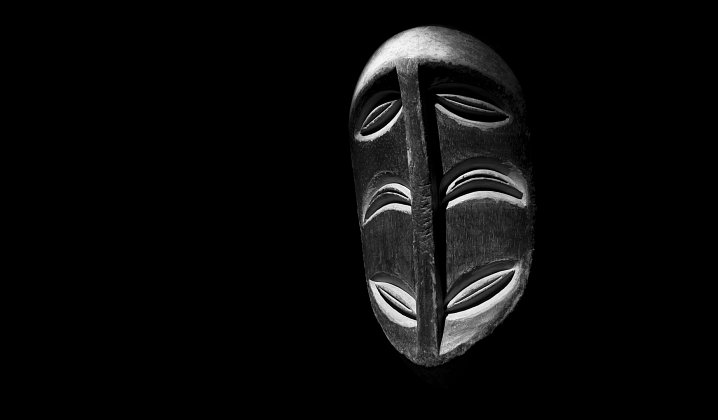Where History Begins

Kader Attia | Duncan Campbell | Ali Cherri | Christodoulos Panayiotou • Curated by Mary Cremin
Where History Begins, explores the complex relationship between material culture and historical truth. The development of archaeology in the early 19th century is closely associated with the categorisation of material culture, preoccupied with the construction of a timeline through which artefacts determine the culture of a society in a space and time. These materials have become indexes within the field of research and when placed within a museum context have become valuable evidence or artefacts evoking a history. This interest in history or preservation has been traced back by historians to ancient art collections that predate the museum at the end of the third century B.C. The museum as collector or preserver of culture has become a contested site for artefacts. The collection of these pieces is often associated with the colonial project, the construction of the Nation State and a symbol of capitalism.
The nature of culture is to be dynamic and constantly shifting, with a multiplicity of histories. This exhibition questions how we construct historical narratives, how there is no one historical truth, and in what way histories have been constructed through the colonial project and particular ideological contexts. The writer Édouard Glissant observed that museums have become more like continents and that they should be more like an ‘archipelago’, he called for a global dialogue that does not erase local cultures but finds the commonality in difference.
Artefacts that demonstrate the complex history of Derry City and its surrounding area, from the early Neolithic period (c.4000 – 3500 BC) to the Ulster plantation period of the 17th century are exhibited with national and international contemporary artists revealing comparative histories with other cultures. The artists address the difficult relationship between destruction, conservation, appropriation and collective memory.
Ali Cherri’s film work Petrified (2015) questions the fetishisation of historical artefacts, by looking at the value we place on provenance and authenticity. The current prevalence of looting and the trafficking of artefacts, especially in conflict zones in the Middle East, open a timely debate on the reconstruction and restoration of demolished heritage. How does this alter the notion of authenticity? What historical traces are deemed valuable and why? Filmed between Sharjah’s Arabian Wildlife Centre and an excavation site in Northern Sudan, Petrified takes a journey into the life of dead objects.
Christodoulos Panayiotou, Real Fakes (2015) questions this notion of authenticity, and what becomes part of the historical lexicon. The work is made from stones that were discarded from archaeological excavations in Cyprus; they become ready mades, sculptures that are formed through a process of creation and destruction. Within the act of digging in archaeology there is the act of revealing and hiding, as often times the site is covered over once excavated and in its becoming it dies returning again to this idea of the dead objects.
Duncan Campbell’s, It For Others (2013) is an essay film that examines how we understand certain histories through objects and how we assign value on material goods. The piece takes as its starting point the 1953 film by Alan Resnais and Chris Marker called Statues Also Die, which asserts that colonialism is responsible for the demystification and commericalisation of traditional art from African culture. The film moves from the appropriation of traditional art from Western Africa, to the death of purpose of these objects from the colonial classes from here Campbell moves to popular culture and the construction of historical narratives through images and objects.
Kader Attia’s film Reflecting Memory (2016) splices interviews with academics and medical professionals with footage of individuals engaged in solitary pursuits: contemplating nature, sitting in a church pew, and admiring urban monuments. The subject discussed is the phantom limb pain experienced by amputees. This pain is aligned to cultural trauma, the history of colonialism and the appropriation of territories, people and objects and the repairing of the past pains or traumas of colonies. In film theory ‘suture’ refers to the phenomenon by which the mind produces a narrative whole from the fragments combined through cinematic cuts, creating a semblance of totality even when we should know better than to expect one. Attia’s film deftly exposes how the desire to perceive a whole subject can itself operate as an act of erasure.
The works reflect on regimes of knowledge both past and present. Questioning perceived notions and casting a critical eye on accepted canons. Where does one position oneself when looking at an artefact, what does it reveal, what does it have in common with other contemporary propositions in the world? In Glissant’s theory of relation, what brings things together is first of all the connection between differences, as they meet one after the other. The basis for which cause ideas, identities and intuitions to meet, revealing to us the common grounds that we share. It is within this commonality that one finds the universal and where history begins.
Void would like to thank the Tower Museum for their support in the supply of artefacts for this exhibition.
Where History Begins – Some Dates for your Diary
Where History Begins opens to the public this Saturday and runs until 16 December. Take a look below at some events that will run as part of the exhibition. Family workshops TBC.
The Paradox of Acting: An Archeology of Our Spectacles
Live performance
Christodoulos Panayiotou • Saturday October 28th, 5-7pm
This is a once-off event and booking is advised. Admission free. Please email hello@derryvoid.com to reserve your space today.
As part of Void Off Site and in collaboration with Foyle Film Festival there will be a screening of
Ali Cherri, The Digger, 2015, Video – 30 min
Courtesy of the artist and Galerie Imane Farès
Alan Resnais & Chris Marker, Statues Also Die, 1953, Video – 30 min
November 21st, 7pm
Admission free. Booking in advance advised.
For further information go to www.foylefilmfestival.org
‘Archaeology and the Troubles: Researching the Past of a Divided City.’
Talk with Brian Lacey
In this talk Brian will reflect on his career as an archaeologist and museum director in Derry, particularly his role in excavating centre-city sites at the height of the Troubles, and researching the fascinating but politically controversial history of the city as both an author and a creator of museum exhibitions.
December 13th, 6pm
Admission free. Spaces limited.
Please RSVP to hello@derryvoid.com to book.
The Story of Derry – A 90 Minute Walking Tour conducted by Mark Lusby
Coordinator of the Friends of the Derry Walls
Saturday November 4th, 1:30pm
The tour will take place in the Merchant Quarter in which Void Gallery is located and it will proceed through the Bogside to Double Bastion on the Derry Walls. Mark will discuss how the Story of Derry is memorialised in streetscapes, buildings, and monuments of the city from the sculpted heads on the former City Factory to the engravings on the 17th ordnance on the Walls.
Derry BT48 7EL
Tuesday 11.00 - 17:00
Wednesday 11.00 - 17:00
Thursday 11.00 - 17:00
Friday 11.00 - 17:00
Saturday 11.00 - 17:00
